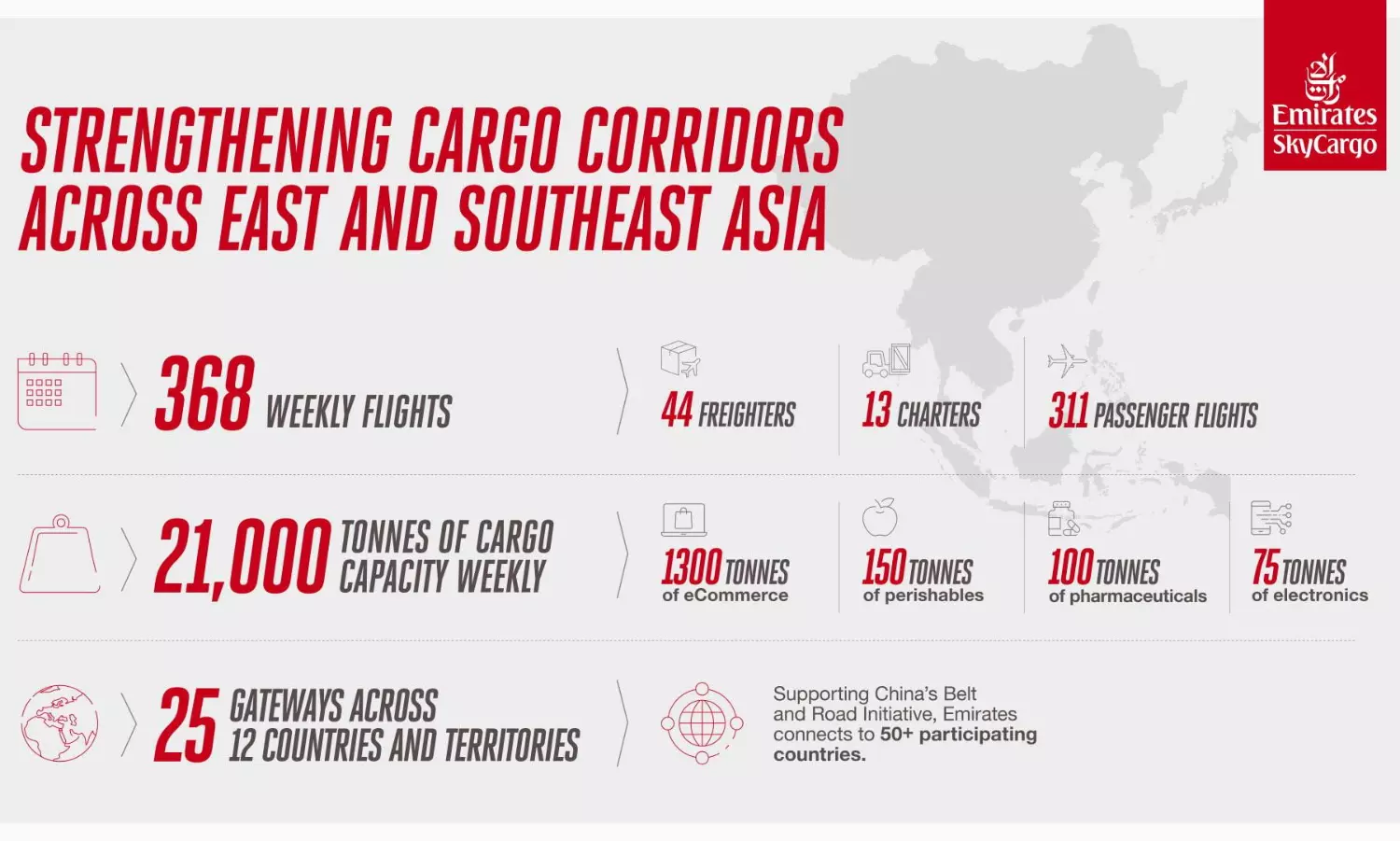Emirates SkyCargo strengthens network, capacity in East Asia
Emirates SkyCargo now serves 25 gateways across 12 countries and territories.

Emirates SkyCargo, the cargo division of the world’s largest international airline, has expanded its operations with the launch of passenger services to Hangzhou, China. This development brings the carrier’s total weekly cargo capacity in and out of East and Southeast Asia to over 21,000 tonnes. Operating the most extensive and diversified route network of any non-Asian airline in the region, Emirates SkyCargo now serves 25 gateways across 12 countries and territories, according to an official release from Emirates SkyCargo.
East and Southeast Asia, firmly established as the 'factory of the world', has developed strong economic corridors that demand substantial air freight capacity to move goods globally. Emirates SkyCargo supports this demand with dedicated freighters serving nine gateways in the region, operating 44 weekly flights, the highest freighter flight density across the airline’s global network. This is further supported by 13 weekly charter services to and from East Asia, providing consistent capacity and reliable connectivity for Asian businesses to Europe and the Middle East. These freighter and charter operations are reinforced by 311 weekly passenger flights, transporting both travellers and cargo using a mix of Airbus A380s and Boeing 777s.
With its high-frequency flight schedule, an Emirates aircraft takes off from East or Southeast Asia approximately every half hour.
“East and Southeast Asia are not just anchors of our global network, they are shaping the future of global logistics and global trade,” says Abdulla Alkhallafi, Vice President of Cargo Commercial, Far East and Australasia. “From cutting-edge manufacturing hubs to high-growth consumer markets, the region drives the pace of trade. Our strategic growth strategy and continued investment in East Asia and Southeast Asia reflect this as we remain laser-focused on building the capacity, routes, and partnerships to best serve the exponential demand.”
As a global hub for innovation, e-commerce, and advanced manufacturing, and boasting a thriving agricultural sector, East and Southeast Asia have long been key markets on Emirates SkyCargo’s global network. In an average week, Emirates SkyCargo uplifts over 450 tonnes of fresh fruit, vegetables, seafood, and other perishable products, 100 tonnes of pharmaceuticals and medical devices, 75 tonnes of electronics, semiconductors, and smart goods, 180 tonnes of garments, and over 1,300 tonnes of e-commerce.
The ‘Aerial Silk Road’, a network of air routes, logistics hubs, and aviation infrastructure that mirrors the historic overland and maritime Silk Roads, provides fast and efficient connections to global markets. With a network spanning over 145 destinations, Emirates SkyCargo is well-positioned to support global trade. The airline also plays a key role in China’s Belt and Road Initiative, offering swift and reliable connectivity to more than 50 countries involved in the initiative.
Beyond its own network and capacity, Emirates SkyCargo forged a strategic partnership with Teleport, the exclusive cargo partner of AirAsia, to better support the burgeoning trade between Southeast Asia and the wider world, via Dubai. Unlocking over 100 primary, secondary, and tertiary regional airports, Emirates SkyCargo is able to better serve global customers with increased capacity, more flexibility, and access into new markets in Asia; conversely, Emirates SkyCargo supports Southeast Asian businesses with better connectivity into Europe, the USA, and Canada.
Since beginning operations in East Asia, Emirates has consistently set benchmarks. In September 2002, Emirates SkyCargo launched freighter services between Dubai and Shanghai, establishing the first direct air connection between the Middle East and the Chinese mainland, 18 months before passenger services began.
This trend continued in 2025 when Emirates SkyCargo introduced a weekly freighter service to Japan’s Narita International Airport, marking the first direct and scheduled freighter link between Narita and the Middle East. The Narita freighter enables faster and more flexible shipments, carrying pharmaceuticals, semiconductor parts, and large or unusually shaped cargo such as machinery components.


